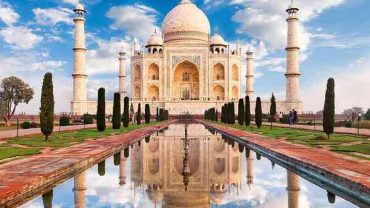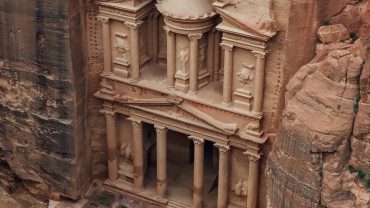Cherishing Mughal Legacy: Monuments in the Heart of Agra
Agra, a city that once served as the heart of the Mughal Empire, is an enchanting tapestry of history, culture, and architectural splendor. While the Taj Mahal is undoubtedly the crown jewel of Agra, the city is also adorned with a wealth of Mughal monuments that stand as silent witnesses to a bygone era of grandeur and opulence. These monuments, each telling its unique story, collectively form a mosaic of the Mughal legacy that continues to be cherished by visitors from around the world.
1. The Taj Mahal: Epitome of Love and Artistry
No exploration of Agra’s Mughal legacy can begin without paying homage to the Taj Mahal, a monument that transcends time, space, and emotion. This ethereal mausoleum, built by Emperor Shah Jahan in memory of his beloved wife Mumtaz Mahal, is a symphony of white marble, exquisite carvings, and intricate detail. Its unparalleled beauty, under the soft glow of sunrise or in the romantic embrace of sunset, is a testament to love’s enduring power and the artistry of the Mughal architects.
2. Agra Fort: The Seat of Imperial Power
Just a short distance from the Taj Mahal lies Agra Fort, a colossal fortification that was once the epicenter of Mughal governance. Built by Emperor Akbar the Great, the fort’s imposing red sandstone walls have borne witness to centuries of political intrigue, power struggles, and momentous decisions. The fort’s expansive complex houses palaces, courtyards, and audience halls, each a masterpiece of Mughal architecture.
3. Fatehpur Sikri: The Enigmatic Mughal Capital
A short drive from Agra leads to Fatehpur Sikri, a city founded by Akbar as his capital. This UNESCO World Heritage Site stands as an architectural marvel with its grand Buland Darwaza, Jama Masjid, and intricate palaces. Fatehpur Sikri’s history is a tale of grandeur and abandonment, as the city was short-lived due to water scarcity. Nevertheless, its red sandstone structures continue to captivate visitors with their intricate design and historical significance.
4. Akbar’s Tomb: A Tribute to Greatness
In the serene suburb of Sikandra, Akbar’s Tomb pays homage to one of the most visionary emperors of the Mughal dynasty. The tomb’s architectural finesse, with its four-tiered pyramid and lush gardens, echoes the greatness of Akbar the Great. It’s a peaceful retreat that showcases the fusion of Persian and Indian architectural styles.
5. Jama Masjid Agra: A Spiritual Oasis
In the midst of Agra’s historical grandeur, the Jama Masjid stands as a spiritual oasis. Commissioned by Shah Jahan, this grand mosque features a vast courtyard, intricate architecture, and slender minarets. It’s not only a place of worship but also a monument to the architectural brilliance of the Mughal era.
6. Chini Ka Rauza: Glazed Tile Beauty
Tucked away in Agra is the Chini Ka Rauza, a lesser-known gem that represents the delicate artistry of the Mughals. Adorned with glazed tilework in vibrant hues, this serene tomb is dedicated to Allama Afzal Khan Mullah, a scholar and poet in Shah Jahan’s court. Its unique beauty, characterized by its use of ceramics and tiles, sets it apart in Agra’s architectural landscape.
7. Itimad-ud-Daulah’s Tomb: The Baby Taj
Known as the “Baby Taj,” the tomb of Itimad-ud-Daulah is an exquisite precursor to the grandeur of the Taj Mahal. Built in white marble and adorned with delicate carvings, this tomb is a tribute to Mirza Ghiyas Beg, a Persian noble who held a prominent position in Shah Jahan’s court. Its smaller size belies its significance in Agra’s architectural history.
8. Mehtab Bagh: A Riverside Serenity
For a view of the Taj Mahal like no other, Mehtab Bagh, also known as the Moonlight Garden, offers a tranquil riverside setting across the Yamuna River. It aligns perfectly with the Taj Mahal, providing a captivating view that is especially breathtaking during sunrise and sunset. The garden’s well-maintained lawns and pathways create an ideal spot for relaxation and photography.
In Conclusion: Preserving Mughal Grandeur
Agra’s Mughal legacy is not just a page in history but a living testament to the art, culture, and architectural brilliance of a dynasty that once ruled a significant part of India. As visitors explore the monuments that grace the heart of Agra, they become part of a larger narrative—the story of the Mughals and their lasting imprint on the city’s landscape.
Each of these monuments, from the Taj Mahal’s eternal love story to the grandeur of Agra Fort and the elegance of Akbar’s Tomb, invites us to cherish and preserve the Mughal heritage. A visit to Agra is a journey through time, a chance to stand in awe of architectural marvels, and an opportunity to celebrate the enduring legacy of the Mughal Empire.
Thank & Regards
Sarfaraz Elahie
The GetExplore Writter
Contact Us
Have questions or need assistance? Feel free to reach out to our dedicated team. We’re here to help you plan your next adventure.




Comment (0)